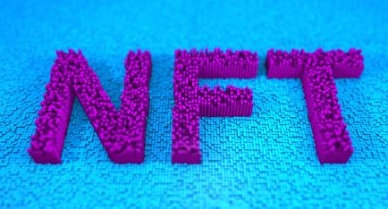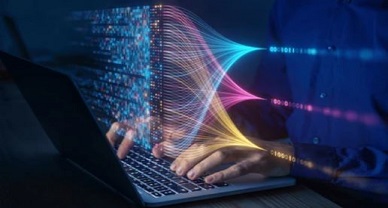A Brief Thematic Review of Non-Fungible Tokens and their Copyright
Introduction
Intellectual property entails the protection of legal rights for inventions and creations made by individuals or businesses using their minds. Such works of art benefit the creator, and they are protected by the law of intellectual property. These advantages can be made profitable for the owner. Copyrights safeguard the artists’ rights in the inventive and imaginative content that abounds in digital media. In today’s digital world, a lot of data and information have been shared online and are susceptible to corruption and copying.
[Image Sources : Gettyimages]
One of the important issues in online is copyrights. Due to the recurrent copyright difficulties, which have a significant impact on an individual’s business interest, it is imperative to preserve the ownership rights of digital works. One such area where copyright violations are common is the internet. In the current cyberspace, copyright infringement and piracy have occurred from developers, artists, and end users. The copyrights Act includes computer programmes and electronic communication, however this has been viewed as a grey area. Following the 2012 revision to the copyrights Act, it was made clear that Internet activities were also covered by the copyright law. In a limited sense, the IT Act, 2000’s discussion of intellectual property and protection problems omitted the issue of technological misuse from its legislative framework.
The media industry as a whole encourages creativity and innovation, and copyright is crucial for digital media platforms. Media platforms, such as social media, are utilised to carry out their professional, commercial, and private functions. They serve as a medium for new ideas, images, and sounds. These are produced by companies and individuals who make investments in the planning, investigation, and development of such breakthroughs. The creators receive a portion of the proceeds, which is protected by copyright legislation. This paper in essence aims to address recently appearing issues with copyrights in relation to NFTs in cyberspace.
The Grey area of NFTs its Copyright
The emergence of cryptocurrencies coincided with an increase in the number of persons investing in virtual money. Parallel to this, Non-Fungible Tokens, often known as NFTs, have seen tremendous growth as more and more people enter the market. NFTs have distinctive identification codes and metadata that are exclusive to the buyer and cannot be duplicated. Due to the lack of a specialised legal framework addressing these new age concepts, a wide range of legal flaws result from these transactions.
NFTs are real digital assets that are traded on the blockchain, a distributed ledger technology. In addition, it keeps a record of the transaction to show who owns the particular digital item. To create a tokenized proof of title, NFTs is employed. They describe a digital representation of a physical thing, such as an image or piece of digital content, or a digital asset, such as a painting or sculpture.[i] It is possible to view NFTs technology as an original method of capitalising on intellectual property. IP owners must plan and safeguard their unique creation from any prospective infringements because NFTs have a distinguishing trait.[ii] The creation of a digital scarcity and the crucial confirmation of ownership that the holder is in possession of the special digital asset are two important features of NFTs.[iii]
NFTs are limited to having a single owner. The fact that it cannot be duplicated by another token due to its unique ID is a noteworthy feature. NFTs are governed by smart contracts, which divide ownership and limit transferability. Blockchain technology allows smart contracts to operate, ensuring the integrity of all sent and received data.[iv] Through a structured verification procedure that adds a new block, verifies the information, and then adds the data to the blockchain, this system ensures authenticity. Additionally, it eliminates all the intermediaries, making the transaction quick and effective.[v]
Prior to the development of NFTs, artists depended on non-traditional legal and financial frameworks to drive the art market. But given the current legal ambiguity, it is now debatable whether cryptocurrencies are legal. Any further infringement would necessitate legal action on the part of the parties. Artists are gradually recognising the impact that NFTs have had on the value of art, and the market pressures are shifting toward digital creations.[vi]
NFT as a challenge to Traditional Markets
The ownership of the copyright specifically, whether it is retained by the creator of the original item or acquired by the buyer remains the main point of contention. An illustration of this idea is that, unless the owner of the copyright expressly grants such a right in writing, a buyer of a sculpture only receives the right to exhibit it, not to make copies of it or derivative works. As a result, the Indian Copyright Act, 1957 grants the owner of the artwork or the licensee sole rights to discharge copyrights that have already accrued under the statute. Additionally, the Indian Copyright Act, 1957’s Section 51 specifies the circumstances in which works of art are deemed to have violated their owner’s copyrights. Copyright infringement would come from the minting of NFTs without the owner’s or licensee’s prior consent, and would be grounds for an injunction or financial penalties.[vii]
NFTs are prone to “copyfraud” and other violations of the moral rights of the inventor. When someone mints an NFT on a public domain, they could falsely claim to be the owner of the original artwork’s copyrights. It is possible for someone to print the NFT while posing as the author of the piece. Due of NFT’s anonymous feature, it gets extremely hard to determine who created a piece of work.[viii] The legitimacy and verification of the work from which the NFT is derived must be taken into consideration by intermediaries when listing NFTs. Additionally, since the buyer is anonymous, it is challenging to enforce copyrights against them. In certain instances, the creators’ works have been imitated by submitting them to blockchain websites, which then produce NFTs. A regulatory structure that verifies the sources, owners, and buyers can be developed to stop these behaviours.[ix]
In addition to that, both domestic and international sale of NFTs is mostly unregulated. NFTs are more vulnerable to new problems in the area of intellectual property because they are accessible to a global audience. Due to some nations’ continued ambiguity over the acceptance of cryptocurrencies, there are opportunities for others’ creative works to be appropriated. NFTs are not governed by any legislation, hence the owner must seek reparation under copyright law through interlocutory injunctions or monetary damages.[x]
The impact of NFTs and the looming legal concerns in the domestic and international arena can be thoroughly evaluated and grasped in the days to come as they’re a modern invention that has acquired popularity
Conclusion
This paper aims to comprehend the modern intricacies of digital copyright and protection. The problems of the requirement of a legal framework to control the contemporary meets traditional copyright issues have been identified. It is necessary to examine the problems associated with the ownership of such digital assets in relation to NFTs transactions. NFTs give creative and artistic people a forum to digitally assess their creative work. A lot of artists are now experimenting with digital art. Therefore, it is necessary to clarify the buyers’ rights and to defend artistic rights. This can be accomplished by acknowledging these difficulties and minimising them by establishing a legal framework and changing the requirements of the copyright legislation. The challenges surrounding the integration of innovation and digital cyberspace in the field of copyrights are ultimately highlighted by this study.
Author: Vikash Kumar Singh, Student of Bharati Vidyapeeth University, New Law College, Pune, in case of any queries please contact/write back to us at support@ipandlegalfilings.com or IP & Legal Filing.
REFERENCES
[i] Robyn Conti, What You Need To Know About Non-Fungible Tokens (NFTs) Forbes (2021), https://www.forbes.com/advisor/investing/nft-non-fungible-token/ (last visited July 01, 2022).
[ii]James Gatto, Laura Chapman and Yasamin Parsafar, NFTS AND INTELLECTUAL PROPERTY: WHAT IP OWNERS AND NFT CREATORS NEED TO KNOW LAW OF THE LEDGER (2021), https://www.lawoftheledger.com/about/ (last visited July 02, 2022).
[iii]Non-Fungible Tokens A Brief Introduction and History https://assets.ctfassets.net/hfgyig42jimx/6A8K5H6VrTydTDuEFHXQ5P/3cca896ad77bd967859a7a1256a5a91f/Crypto.com_Macro_Report_-_Non-Fungible_Tokens.pdf
[iv]FORMULATING A SMART CONTRACT AND MINTING AN NFT, https://www.schoenherr.eu/content/formulating-a-smart-contract-and- minting-an-nft/ (last visited June 30, 2022).
[v] Non-fungible tokens (NFT), ETHEREUM.ORG, https://ethereum.org/en/nft/ (last visited July 01, 2022).
[vi]Anuradha Vikram, THE NFT’S PROMISEOF CONTROL ARTNEWS.COM, https://www.artnews.com/art-in- america/features/artists-nfts-control-market-1234591850/ (last visited June 30, 2022).
[vii] Commercialising copyright: NFT’s – does popularity mitigate legal risks, LEGAL DEVELOPMENTS, https://www.legal500.com/developments/thought-leadership/commercialising-copyright-nfts-does popularity-mitigate-legal- risks/#_edn4 (last visited July 01, 2022).
[viii]Non-fungible tokens (nfts) and copyright law, BIRD & BIRD, https://www.twobirds.com/en/news/articles/2021/australia/non- fungible-tokens-nfts-and-copyright-law (last visited July 01, 2022).
[ix] CIPRA Admin, INTERFACE BETWEEN NFTS AND COPYRIGHT LAW IPR LAW INDIA – INDIAN IP LAW RESOURCES (2021),
https://iprlawindia.org/interface-between-nfts-and-copyright-law (last visited July 01, 2022).
[x] Person & Kelley S. Gordon Gregory J. Chinlund, WHAT ARE THE COPYRIGHT IMPLICATIONS OF NFTS? REUTERS (2021), https://www.reuters.com/legal/transactional/what-are-copyright-implications-nfts-2021-10-29/ (last visited July 01, 2022).



